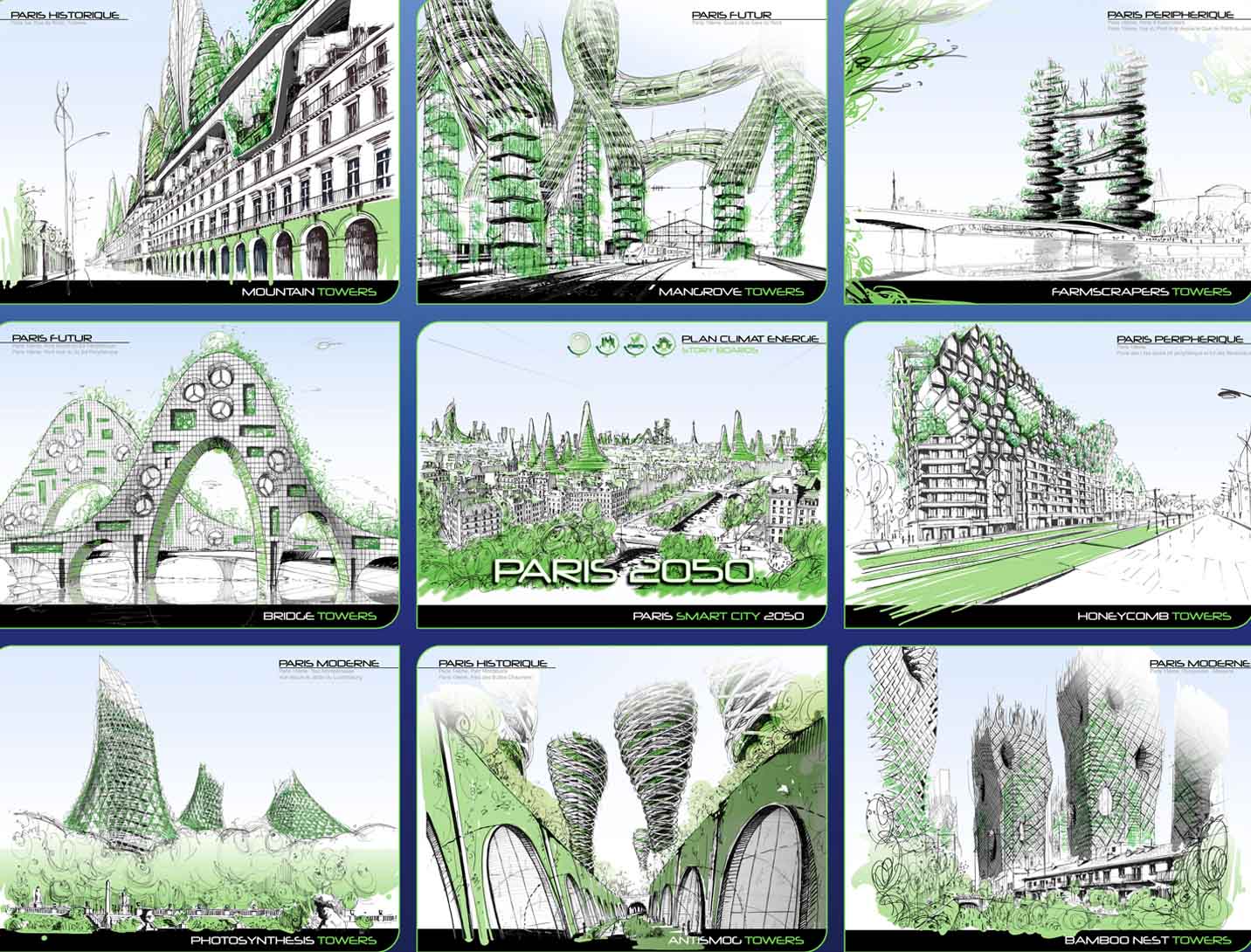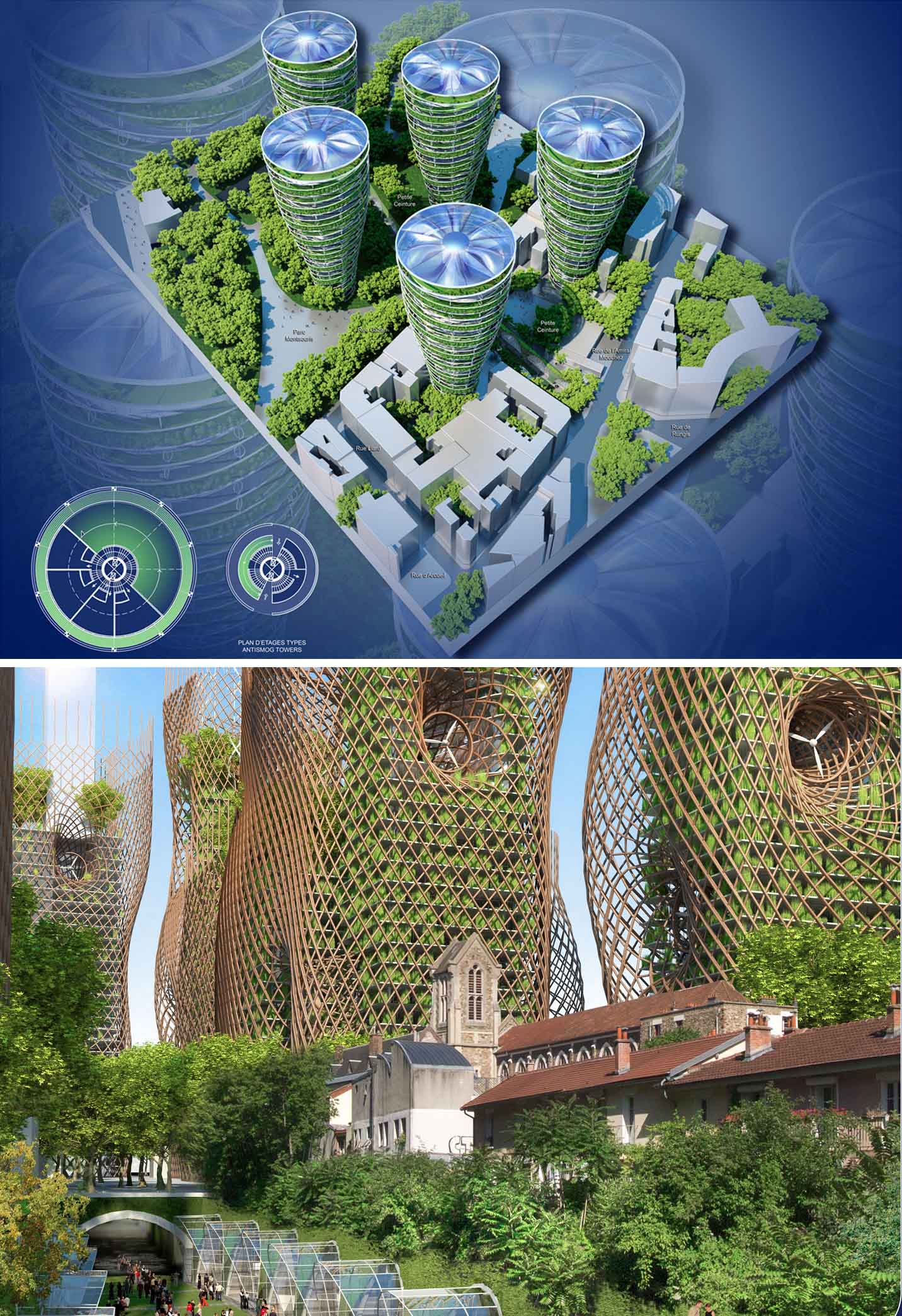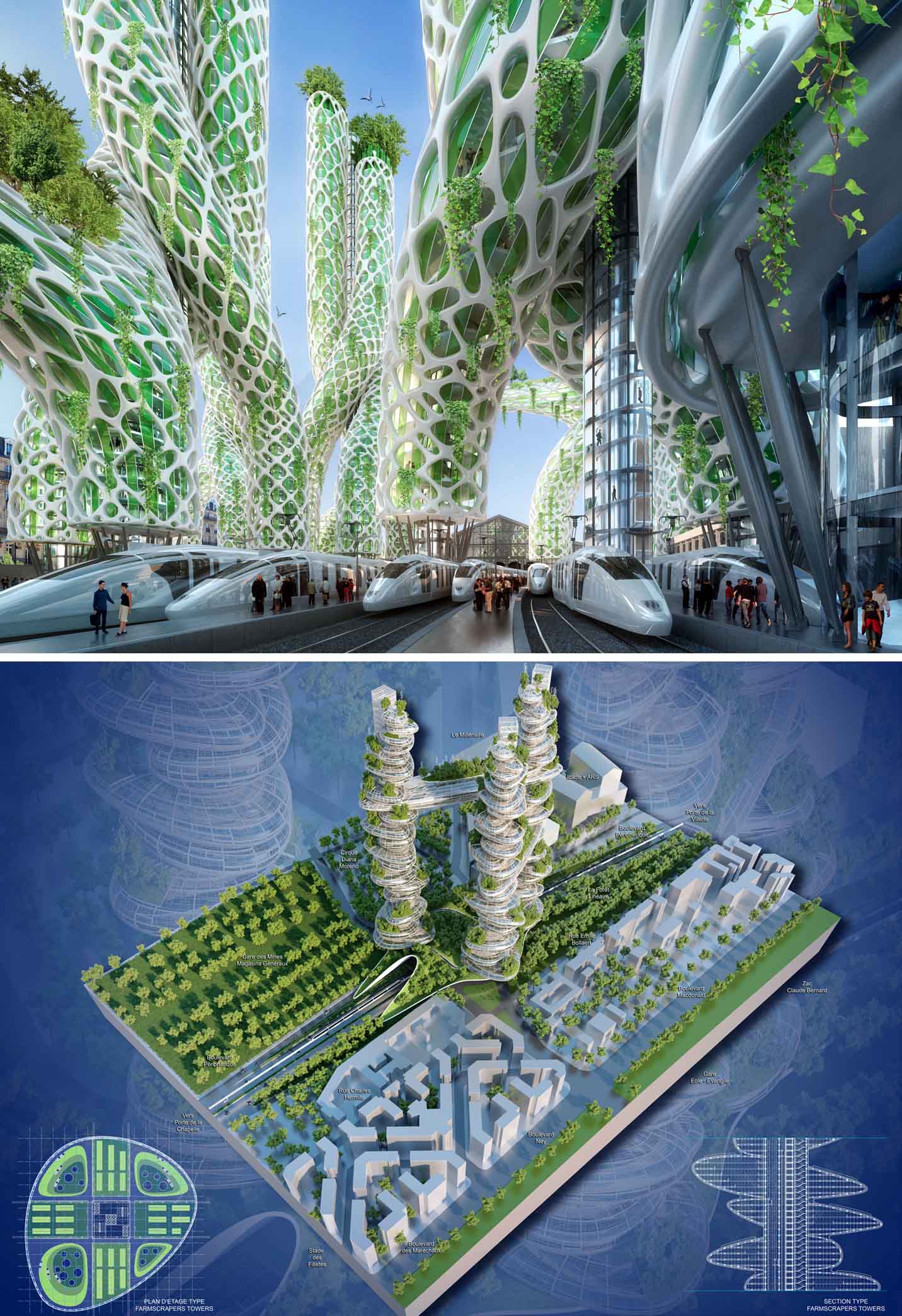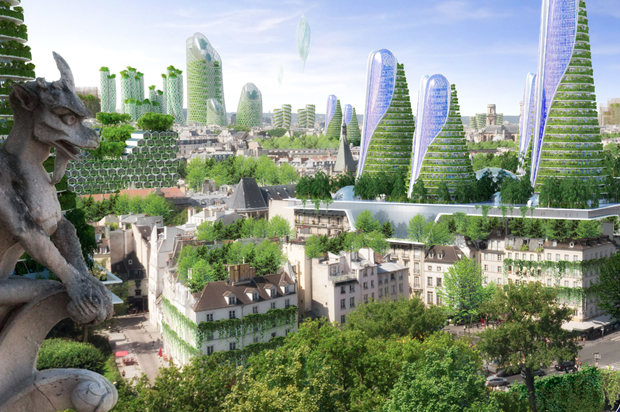“The city is a fact in nature, like a cave, a run of mackerel or an ant heap. But it is also a conscious work of art and it holds within the communal framework many simpler and personal forms of art. Mind takes form in the city and in turn urban forms condition mind.”
– Lewis Mumford, The Culture Of Cities (1938)
Lewis Mumford’s emphasis on the structure of the city like art and nature and its urban forms calls for a more sustainable approach than mere expansion of cities by extending the planning boundaries and inducing rapid urbanisation. Energy and technology in our cities are intrinsic components to becoming more resilient and sustainable. The interdependence of energy consumption, building design and planning, urban structure and morphology, social and cultural aspects and their effect on the environment have become obvious in the years of urbanisation. In the recent past, energy emissions have become a large source of environmental damage. Architecture, urban design and planning have reacted in different ways to counter this issue.
Undeniably, newer technologies, biomorphic design and materials, newer greener sources of fuel, solar and wind technologies are crucial elements to a sustainable society and hence get reflected in the urban fabric of our cities. It is not only about replacing conventional systems of technology with renewable ones but also of establishing a new relativity between technology, architecture and society. The aim is to develop opportunities to overcome environmental hazards and design in cohesion by exploring fresh methods of energy conservation.
Energy and technology in our cities are intrinsic components to becoming more resilient and sustainable
In recent years there have been a number of cases of new towns and cities built and proposed on the principles of sustainability, newer renewable systems of technology and energy. However, it remains to be seen whether our existing cities, ranging from small towns to mega cities, adapt to newer technologies and systems in terms of energy so that they eventually become energy neutral. It is imperative that our existing cities look for processes for their ideal urban transformations into energy efficient cities of the future.
Emphasis would be on the fact that by 2050 we would be looking to rebuild our cities on patterns of sustainibility, restructuring the existing fabric of cities to fit future needs and to respond to the natural ecosystem with the help of technology. In 2014, a sensitive study was carried out by Vincent Callebaut Architecture with the engineers of Setec Bâtiment to showcase how the city of Paris would adapt to energy and technology systems and become a city of the future by 2050. The history and the evolution perspective of the high-rise buildings in the context of Paris Climate Energy Plan and the city fabric of Paris along with details of the energetically connected prototypes are presented below:

Mountain Towers
The Mountain Towers project at Rue de Rivoli in the historic district of Paris aims at the construction of bioclimatic mountains integrating renewable energy technologies on the roofs and in the interiors of its blocks. The Mountain Towers would deal with the increasing density and vertically triple the housing in each Parisian housing block by distributing the structural loads through the old ducts of blocked chimneys and adding more dwelling units on the top.
Three types of renewable energies will be available in each tower: During the day, two huge photovoltaic and thermal solar shields bio-inspired by the form of the structure will produce electricity and hot sanitary water. At night, a reversible hydro-electrical storage station will let an urban cascade flow out from the top of the tower between two basins of rainwater retention tanks located at different levels, preventing the need for batteries to store the electricity produced by the solar blocks. Finally, the garden balconies will surround the inhabited storeys and filter in clean recycled water rejected by the inhabitants with the help of phyto-purification and bio-composting.
Antismog Towers
This is an ecological corridor of 23 kms in the heart of Paris punctuated by photo catalytic towers. Paris’s defunct Petite Ceinture would find a new lease of life in the adaptive reuse of its railway lines. The Antismog Towers intend to reuse the railway lines as green areas by the integration of community food gardens cultivated by the residents of the area. The cycle paths and the urban vegetable gardens will be implemented vertically around the proposed cyclonic towers purifying the green areas by hydroponic phyto-purification. These towers will offer mixed urban density housing. They will be integrated at the ecological junctions between the radial Parisian boulevards and along the existing ecosystems such as the Buttes Chaumont, the Monsouris Park and the André Citroên Park. Energetically, these towers will produce electricity by the integration of axial wind turbines. These tunnels would be lit through piezoelectric promenades.
The eight proposed towers also tend to form eight precincts of distinctive character and give a new identiy to the existing image of the city
Photosynthesis Towers
By 2050, Montparnasse Tower will be looked upon as a neutral ecosystem built under the shape of a vertical public park on several floors overhung by sky gardens. Banisters will meander around the reinforced structure and will offer helical piezoelectrical promenades in the shape of an almond around the 58 floors in the sky of Paris.
In the triangular openings located at both extremities of the tower, the public elevators with renewable energy will be integrated in order to separate the visitors from the staff working in the offices of the tower. This planted green space in the heart of Paris will cover Montparnasse Tower as well as other smaller towers (building C and Express Tower) with an insulating bio-facade that produces biofuel. Green micro algae will be cultivated on curtain-walls in planar and triangular photobioreactors inbuilt in laminated glass. They will capture the thermal solar energy.

Bottom: Bamboo Nest Towers
Bamboo Nest Towers
The Bamboo Nest Towers intend to revitalise the 13 towers of Massena area built on the grounds of the former Panhard & Levassor plant. In 2050, Villa d’Este, presenting the highest concentration of towers in Paris, would demonstrate urban vertical agriculture on the existing floors of the high rise buildings.
The towers will be enveloped by an ecoskeleton in bamboo. This skeletal structure would structurally support the load of individual vegetable garden balconies and community orchards surrounding the existing housing. The micro climate control would be provided mainly by the evapo-perspiration of the plants, in addition to the electricity generated by the axial wind turbines implanted on the roofs. The main energy source will come from the concentrating thermodynamic plant.
This skeletal structure would support structurally the load of individual vegetable garden balconies and community orchards surrounding the existing housing
Honeycomb Towers
To tackle the increasing residential density, the Honeycomb Towers propose to double the height of the existing residential areas by typomorphologically interlocked dwelling units like a honeycomb with hexagonal alcoves. This urban implant will offer to the new inhabitants vegetable gardens and suspended orchards recreating in the city the advantages of a rural individual house. Structurally, this hive would be supported by a steel structure that descends its loads vertically through the existing chimney ducts crossing the buildings.
The single-family module will be standardised and prefabricated. This urban form with an organic silhouette will be transformed into a true suspended nourishing garden in the sky inviting the Parisian fauna and flora to thrive. The roofs will be covered by thermal and photovoltaic solar panels and in the Sérurier and Mortier boulevards, the Phylo lights (hybridisation of a lamp and an axial wind turbine) will assure the public lighting provisions.
Farmscrapers Towers
The Farmscrapers Towers concept aims at accentuating the Claude Bernard urban development zone and its linear forest with the new master plan of Aubervilliers. Through the urban articulation of ecological corridors, the three vegetable towers would form a part of the larger system of the urban forest. These towers would induct vertical farms with floors of agriculture fields cultivated by the inhabitants.
The objective is to recreate the countryside in the urban fabric and to reintegrate the food production locally. These Farmscrapers would conceive a more hollistic urban form by creating self-sufficient systems in terms of transport, public and private spaces. The towers would use clean renewable energies like the biomass, methanisation, the photovoltaic, thermal solar energy and
wind turbines.

Bottom: Farmscrapers Towers
Mangrove Towers
As the name suggests, the Mangrove Towers will be inspired by the mangrove trees of the maritime marshes with their pneumatophores and their stilt roots. They will be implanted directly on the platforms of the Gare du Nord. These mixed use towers will accommodate offices, hotels and high density housing.
The project will be eco-designed from state-of-the-art renewable energies to present a zero carbon footprint. The station platforms will be full of piezoelectrical captors polarising under the action of the mechanical movement generated by the users of the building. The tubular facades will be composed of Grätzel cells forming a photo-electrochemical skin inspired by the light (photons), which will also produce the electricity by electrolysis.
These towers would induct vertical farms with floors of agriculture fields cultivated by its inhabitants
Bridge Towers
With the objective of making the city denser by inhabited vertical ecosystems, the Bridge Towers propose the construction of two green bridges at the river gates of Paris. These two bridges with jelly fish silhouettes emerging from the water will link the 15th and the 16th arrondissements in the west to the 12th and 13th districts in the east.
These twin towers would adaptively recustomise and reuse both existing bridges of the ring road in order to enhance both entrances to the city. Perforated by wide funnels, the towers will be supplied by electrical energy through hydrokinetic turbines (hydroelectrical turbines), which will use the kinetic energy of the river. The conveyors of these water wheels will help reestablish the rotary movement of the axis of the turbines from the linear movement of the river. These turbines would also form an aesthetic feature in the form of gates.
In terms of its urban form and technology, Vincent Callebeaut Architecture’s vision for the Paris of 2050 might tread on the boundary of the utopian but the process and intent of the design seems very sensitive. Reusing existing defunct spaces and reintegrating sustainable technologies with the existing fabric and in turn also increasing the density of the urban tissue seems a perfect response to the challenges our cities face today. The eight proposed towers also tend to form eight precincts of distinctive character and also give a new identiy to the existing image of the city. Thus, technology and energy would not only change the infrastructure systems and function systems in a sustainable manner but also evolve a new paradigm in terms of its morphology and urban texture.
Our cities are increasingly becoming more complex representing multiple ecologies. Thus in the case of Paris, after its Hausmannisation leading to a well ordered city of the 19th century with boulevards, Vincent’s proposal looks at a model of sustainibility, high density living and biomorphic forms adding a new layer of ecology to the city of Paris. Perhaps in this vision of Paris there are subtle clues for our cities to think about their future in a sustainbale, greener way.
All Photographs: Vincent Callebaut Architectures, Belgium



Comments (0)